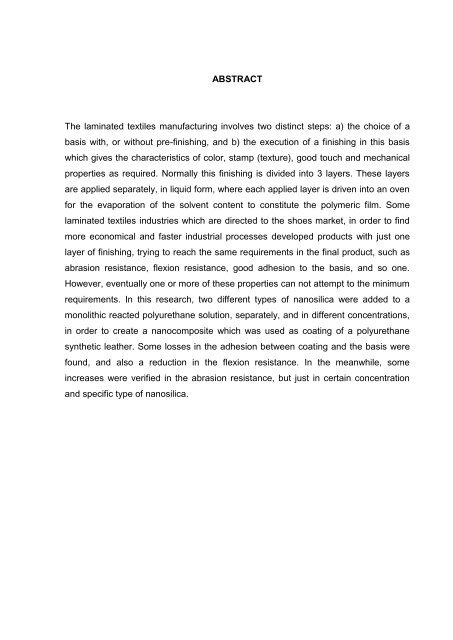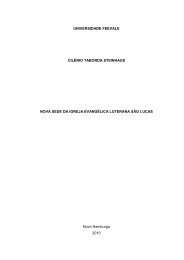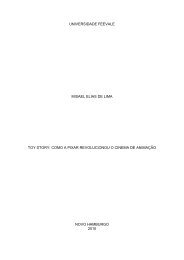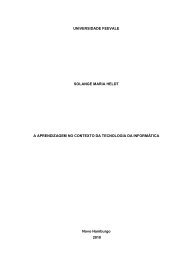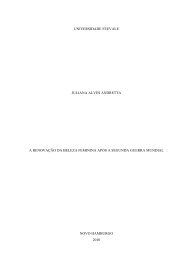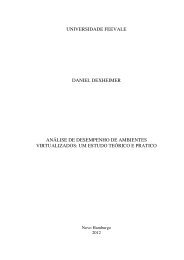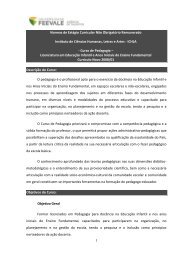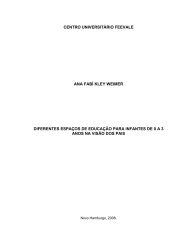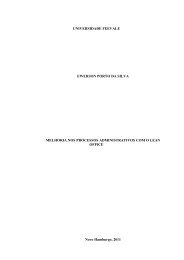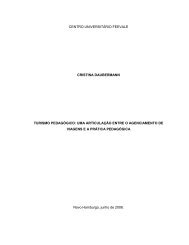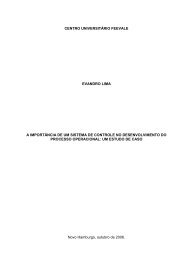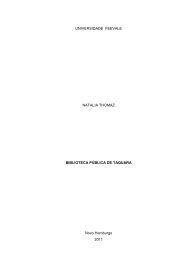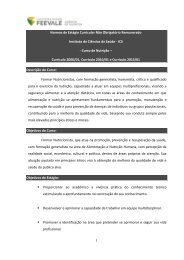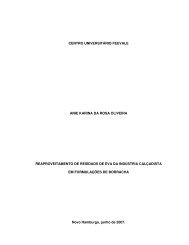PROJETO DE PESQUISA – SIDNEI FERNANDO BLOS - Feevale
PROJETO DE PESQUISA – SIDNEI FERNANDO BLOS - Feevale
PROJETO DE PESQUISA – SIDNEI FERNANDO BLOS - Feevale
You also want an ePaper? Increase the reach of your titles
YUMPU automatically turns print PDFs into web optimized ePapers that Google loves.
8ABSTRACTThe laminated textiles manufacturing involves two distinct steps: a) the choice of abasis with, or without pre-finishing, and b) the execution of a finishing in this basiswhich gives the characteristics of color, stamp (texture), good touch and mechanicalproperties as required. Normally this finishing is divided into 3 layers. These layersare applied separately, in liquid form, where each applied layer is driven into an ovenfor the evaporation of the solvent content to constitute the polymeric film. Somelaminated textiles industries which are directed to the shoes market, in order to findmore economical and faster industrial processes developed products with just onelayer of finishing, trying to reach the same requirements in the final product, such asabrasion resistance, flexion resistance, good adhesion to the basis, and so one.However, eventually one or more of these properties can not attempt to the minimumrequirements. In this research, two different types of nanosilica were added to amonolithic reacted polyurethane solution, separately, and in different concentrations,in order to create a nanocomposite which was used as coating of a polyurethanesynthetic leather. Some losses in the adhesion between coating and the basis werefound, and also a reduction in the flexion resistance. In the meanwhile, someincreases were verified in the abrasion resistance, but just in certain concentrationand specific type of nanosilica.


